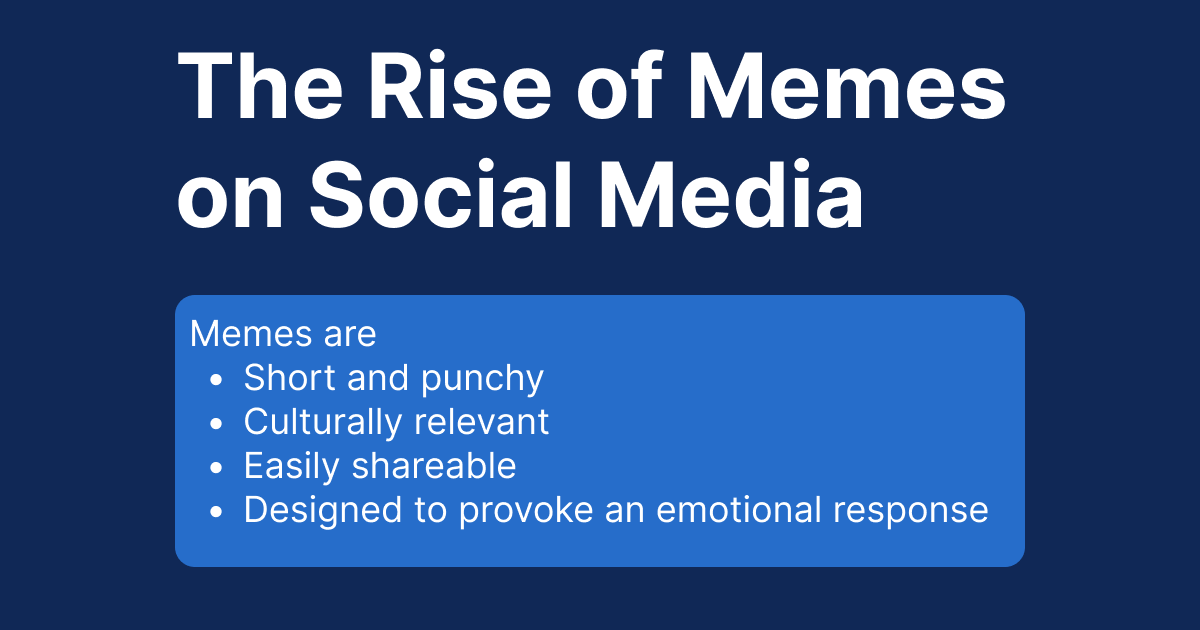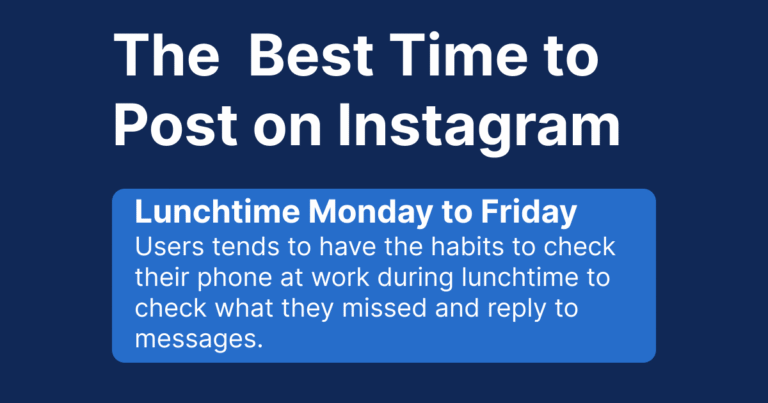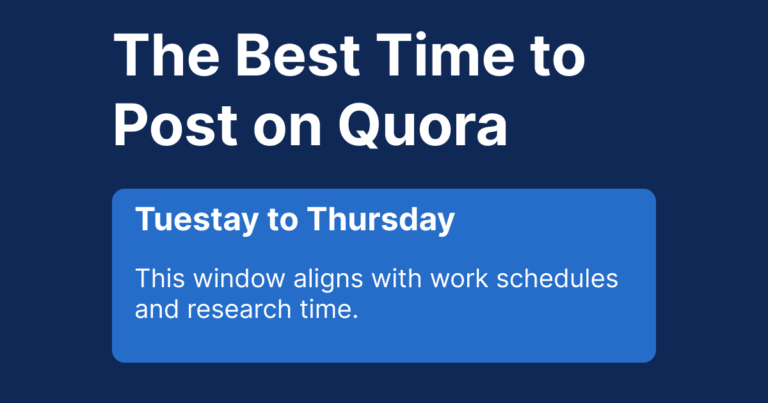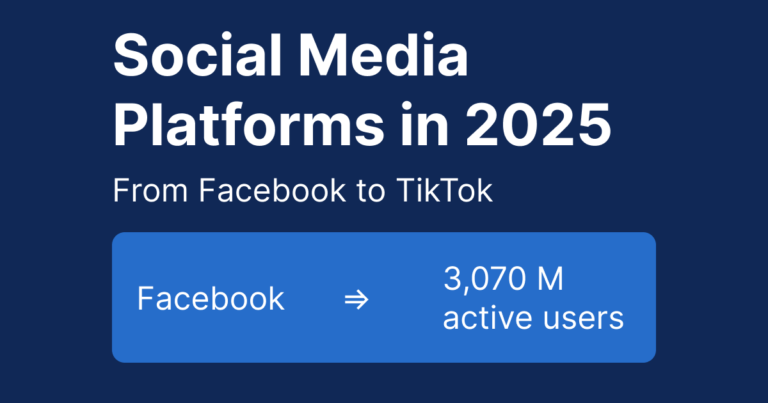The Rise of Memes on Social Media

In today’s fast-paced digital world, memes have emerged as one of the most powerful and relatable forms of communication on the internet. From humorous takes on everyday life to cultural commentary and brand storytelling, memes have carved out a unique space in the social media ecosystem.
But what exactly makes memes so effective? Why are they shared so widely? And how can individuals and businesses harness their power in an authentic, engaging way?
In this post, we’ll take a deep dive into the world of social media memes—from their origins and psychology to how they’re used in branding and everyday content creation. Whether you’re a marketer, creator, or casual user, understanding the influence of memes can offer new ways to connect and communicate in the digital age.
What is a Meme?
At its core, a meme is a piece of content—usually an image, video, or short piece of text—that conveys a humorous, emotional, or relatable message. Memes often follow a visual or textual format that is easily recognizable and adaptable.
They are typically:
-
Short and punchy
-
Culturally relevant
-
Easily shareable
-
Designed to provoke an emotional response (usually laughter or recognition)
Memes rely on repetition and variation. A successful meme can spawn hundreds or thousands of iterations, all adapted to different subcultures, communities, or trending events.
The History and Evolution of Memes
The concept of the meme predates the internet. The term was first introduced in 1976 by biologist Richard Dawkins in his book The Selfish Gene. Dawkins used “meme” to describe an idea, behavior, or style that spreads from person to person within a culture—much like how genes spread biological information.
With the rise of the internet, this concept took on a visual, humorous, and highly shareable form. In the early 2000s, memes began appearing on forums like Reddit, 4chan, and Tumblr. Think of classics like “Bad Luck Brian,” “Success Kid,” and “Grumpy Cat.” These memes quickly became viral sensations, referenced across digital platforms and even traditional media.
As social media platforms evolved, so did the meme. Instagram, Twitter (now X), Facebook, and TikTok accelerated the meme cycle, allowing creators to remix and distribute content at unprecedented speed. Today, memes are no longer just jokes—they’re tools of communication, identity, marketing, and even activism.
Why Are Memes So Popular on Social Media?
Memes dominate social media feeds for a reason. They’re easy to consume, emotionally charged, and often hilariously accurate. Here’s a breakdown of why they resonate so deeply:
1. Memes Are Relatable
People are drawn to content that reflects their own experiences. Memes excel at capturing the little things in life—awkward moments, shared frustrations, nostalgic references—and presenting them in a humorous, digestible format.
2. They Offer Instant Gratification
Memes are the fast food of content. In just a few seconds, a user can read, relate, laugh, and share. This quick dopamine hit keeps people scrolling—and sharing.
3. They Create a Sense of Belonging
Memes often rely on insider knowledge. When someone understands and shares a meme, it signals their membership in a certain group—whether that’s a fandom, a generation, a niche interest, or an online subculture.
4. They Encourage Participation
Unlike traditional media, memes are inherently interactive. A user can take a trending format, add their own twist, and share it with their followers. This remix culture fuels ongoing engagement and keeps memes evolving.
5. They Thrive on Virality
Because they’re short, funny, and relevant, memes are the perfect format for going viral. They’re optimized for shares, screenshots, and reposts—making them a key element of internet culture.
The Psychology of Memes
Understanding why memes work also means understanding the psychological mechanisms behind them.
1. Social Identity and Validation
Sharing a meme can be a form of self-expression. It tells others what we think, feel, or value—without saying it outright. When someone responds positively to a meme we’ve shared, it reinforces our identity and social standing.
2. Humor and Emotional Release
Laughter is a natural stress reliever. Memes provide a quick escape from the pressures of daily life. Even serious or uncomfortable topics can be made more palatable through humor—helping people cope while also prompting reflection.
3. Cognitive Ease
Memes are easy to process. Their visual nature, simple language, and clear punchlines make them accessible to a broad audience. The brain loves content that’s quick to understand, and memes deliver that in spades.
Types of Memes That Thrive on Social Media
Not all memes are created equal. Different formats appeal to different demographics and purposes. Here are some of the most common (and successful) types of memes online today:
1. Image Macros
These are the classic meme format: a static image with top and bottom text. Think “Distracted Boyfriend” or “Two Buttons.”
2. Video Memes
Short-form video content on platforms like TikTok and Instagram Reels has given rise to a new era of memes—often using audio clips, filters, or trending challenges.
3. Text-Based Memes
Sometimes, a tweet or paragraph of relatable text is enough to qualify as a meme. These rely heavily on wit and timing.
4. Pop Culture Memes
Clips and quotes from TV shows, movies, and music videos are constantly repurposed into memes. These tap into shared cultural moments.
5. Absurdist Memes
Surreal humor, anti-jokes, and chaotic visuals define this niche. These memes often make little sense but thrive in internet subcultures.
How Memes Are Used in Brand Marketing
While memes may seem like a purely informal or silly form of content, they have immense value in marketing and branding when used correctly.
1. Building Brand Personality
Memes allow brands to shed the corporate tone and show a more human, relatable side. They help create a voice that feels friendly and approachable.
2. Increasing Engagement
Because memes are inherently shareable, they naturally boost likes, shares, comments, and follows. A single viral meme can dramatically increase a brand’s visibility.
3. Cultural Relevance
Posting memes tied to current events or trending topics shows that a brand is in tune with its audience’s world. This timeliness creates trust and loyalty.
4. Low-Cost, High-Impact Content
Creating memes is inexpensive and doesn’t require high production values. With creativity and timing, a meme can outperform a polished ad campaign.
Best Practices for Using Memes as a Brand or Creator
If you’re considering using memes in your content strategy, here are some golden rules to follow:
✅ Be Authentic
Don’t force a meme if it doesn’t align with your brand’s identity. Forced or out-of-touch memes can do more harm than good.
✅ Know Your Audience
Use memes that resonate with your specific demographic. A meme that works with Gen Z might fall flat with Gen X.
✅ Keep It Timely
Jump on trends quickly. Memes have a short shelf life, and posting a meme after it’s gone stale can make your brand seem disconnected.
✅ Credit Original Creators When Possible
While memes often evolve and change hands quickly, it’s good practice to give credit or context—especially when sharing content made by independent creators.
✅ Use Humor, But Be Sensitive
Memes can touch on sensitive topics. Ensure your humor doesn’t cross into offensive or exploitative territory.
The Future of Memes on Social Media
As platforms evolve, so too will the format and function of memes. We’re already seeing memes integrated into augmented reality, interactive content, and even NFTs.
AI-generated memes, for example, are emerging as a new frontier—allowing users to auto-generate humor based on prompts or preferences. Meanwhile, meme templates are being built into apps and social platforms, making creation even more accessible.
But no matter the format, the core function of memes will likely remain the same: to connect, to comment, to entertain, and to reflect the ever-changing world around us.
Final Thoughts
Memes aren’t just internet jokes—they’re a digital language that shapes how we communicate, connect, and express ourselves. They offer a mirror to society, capturing everything from the mundane to the monumental with humor, irony, and creativity.
For individuals, memes are a way to feel seen and understood. For brands and creators, they’re an opportunity to engage audiences in meaningful—and entertaining—ways.
So next time you come across a meme that makes you laugh, think, or share… remember, you’re not just consuming content. You’re participating in a cultural moment.





